THE LEADERSHIP GAP
WHAT GETS BETWEEN YOU AND YOUR GREATNESS
After decades of coaching powerful executives around the world, Lolly Daskal has observed that leaders rise to their positions relying on a specific set of values and traits. But in time, every executive reaches a point when their performance suffers and failure persists. Very few understand why or how to prevent it.
For the first time, Lolly Daskal presents a remarkably powerful system she uses to help top executives harness the virtues of their leadership style. She illustrates how leaders embody seven archetypes and how each archetype has a powerful abilities and hidden impediments.
SEVEN ARCHETYPE AND THEIR GAPS
The Rebel, driven by confidence;
and the Imposter, plagued by self-doubt.
The Explorer, fueled by intuition;
and the Exploiter, master of manipulation.
The Truth Teller, embraces candor;
and the Deceiver, who creates suspicion.
The Hero, embodies courage;
and the Bystander, a coward if there ever were one.
The Inventor, brimming with integrity;
and the Destroyer, is morally corrupt.
The Navigator, trusts and is trusted;
and the Fixer, endlessly arrogant.
The Knight for whom loyalty is everything;
coupled with the Mercenary, who is perpetually self- serving.
Within each of us are two competing sides, a polarity of character,
but only one leads to greatness.Regardless of how successful we become,
if we want to continue to have a positive impact on the world and make a difference,
we must constantly rethink the instincts that drive us.
CHAPTER EIGHT
THE KNIGHT
Fight on, brave knights! Man dies, but glory lives!
Fight on; death is better than defeat!
Fight on, brave knights! For bright eyes behold your deeds!
—Walter Scott
Knights are primarily associated with chivalry and protection, but they are driven by going to battle for an honorable cause and are devoted to serve. Knights display fierce loyalty and partnership with others while protecting and bonding people together. It is the knight who knows that leadership must have loyalty—the kind that is reliable and dependable and is filled with dedication. Knights will stand beside you and will serve you, before they serve themselves.
Knights are always asking, “How can I serve you?” while others are thinking, “How can I serve me?”
Shakespeare gave us a vision of the faithful knight when he wrote, “I will follow thee, to the last gasp, with truth and loyalty.” Roman playwright Terence called the knight “a man of ancient virtue.”
We are fortunate to find leaders who are loyal; and as leaders, we will be lucky to find people who are willing to stand by us through good times and bad. Loyalty is an essential element in both our professional and personal lives—it’s the bond that ties people together.
THE KEY TO KNIGHT’S SUCCESS
LOYALTY
Loyalty isn’t grey. It’s black and white.
You’re either loyal completely, or not loyal at all.
And people have to understand this.
You can’t be loyal only when it serves you.
— Sharnay
Knights are protectors, champions, defenders of and believers in their missions and the organizations they work for, the people they work with—and even in their customers. Our knights are loyal.
As a leader, when you have the persona of a knight, your employees feel safe when you protect and serve them. And when they feel safe, they can make bold moves as individuals— moves that can lead your business to new opportunities and successes. Loyalty is about bonding and protecting; it is about acting as a unit—a partnership—providing security for one another, giving emotional support when necessary, and protecting those who work for us, as well as the people for whom we work.
But loyalty is more than just working together and being bonded to each other. It’s about pooling the talents and strengths of others in ways that make people feel stronger. People who work in organizations are human beings who want to contribute and belong—they want to know they are part of a worthy cause. Most people who take the time to go to work each day don’t do it just for a paycheck—they go to work each day because they want to devote their minds to something meaningful, and they want their hearts to resonate with something purposeful.
The knight knows how to release the spark within his people and earn their loyalty.
According to loyalty expert James Kane, “Loyalty is all in your head”—no different than the other emotions we experience as human beings, including happiness, sadness, love, and hate.
Kane says, “And just like any emotion, it is a result of our brain’s response to certain stimuli. Our mind sees, hears, feels, or senses all sorts of things that trigger very specific emotional reactions in us, typically followed by some correlated behavior.”4
According to Kane, three specific things determine whether or not we feel a sense of loyalty to another person, product, brand, or organization.
These three things are:
A sense of trust. Trust is the foundation on which we build loyalty. If we don’t trust that someone will be consistent in his or her behavior and actions, then the loyalty we feel may be fleeting.
A sense of belonging. When we feel a sense of belonging, we feel a personal connection to another person, product, brand, or organization. We identify with someone or something, and we solidify the bonds between us through our loyalty.
A sense of purpose. When CEOs paint an inspiring vision of the future, they create a sense of purpose that draws people to them, and to their product, brand, and organization—and it earns their loyalty.
As Kane puts it, “. . . we want our leaders to be like us, to think like us, and to act the way we would.”5 We all aspire to be knights, and we give our loyalty to the knights among us.
How can you spot a knight in your organization?
The Knight as a leader is always in service to others.
Knights serve with the twin ideals of loyalty and devotion. They view things in terms of, “How can I help you get this job done?”—knowing that if they pull their weight, others will pull theirs just as fiercely, and with just as much devotion.
The knight knows that loyalty is about reliability.
When reliability is present, people feel empowered. Yes, people are stronger when they are together. But if you knew that you had someone who was looking out for you—watching your back—you just might feel invincible.
The knight has a fierce determination to be committed to his people.
When leaders are fully committed to their people, the determination employees feel within is fierce. When a leader takes the stand, “I will do anything for my people,” employees feel empowered to take chances.
The knight demonstrates competencies.
Leaders must be competent in their skills—they must master the knowledge required in their positions, have good judgment, and must demonstrate significant abilities. Leaders must also have strong character and be decisive. Their courage and confidence must be unquestioned, and they must set an exemplary standard for others to follow.
For the knight, loyalty is defined as a commitment or an allegiance to a person, a group, or a cause. A knight is capable, charismatic, charming, daring, dignified, and dutiful. He has strong opinions, and an even stronger mind; and yet, he leads with a tender heart.
THE KNIGHT’S LEADERSHIP GAP
THE MERCENARY IS SELF–SERVING
Of course, the self-serving bias is something you want to get out of yourself.
Thinking that what’s good for you is good for the wider civilization
and rationalizing all these ridiculous conclusions based on this
subconscious tendency to serve one’s self is a terribly inaccurate way to think.
—Charlie Munger
I was summoned to assist an industrial conglomerate located in a large Asian capital. The company was experiencing a surge in growth at a time when many similar companies were shrinking. The business’s leadership accomplished this growth through very smart strategies, including expanding the company’s portfolio through lightning-fast acquisitions of its competitors.
My job was to ensure a smooth transition for one of the new acquisitions by coaching that company’s CEO, Francesca, on how to integrate well with the new parent company. The transition would take up to two years, and Francesca would need the help and support of many—in particular, the former CEO of the newly acquired company, Lin. The parent company had made a sweet deal—giving Lin a handsome payout, but also asked him to stay on for up to two years as a paid consultant to help the new CEO with the transition.
When the acquisition team conducted due diligence, everyone at the company seemed friendly, eager, and excited about the change. But as soon as the sale was finalized, the story became entirely different. Lin began to shut his door whenever Francesca was around, and was always busy when the new CEO wanted to talk to him. Not only that, but in meetings, he openly criticized Francesca, making fun of the way she spoke. He mimicked her thick French accent, saying, “I don’t understand you—can you please speak in English?” He couldn’t let any opportunity to belittle Francesca pass by.
At first, Francesca—my client—did not know how to deal with this about- face. She felt betrayed, and she was extremely concerned. During our coaching call, she said, “I need Lin’s support to be successful. Without him, I cannot do this. I moved my entire family here, and frankly, I am not about to fail.” I reassured her, saying, “We just have to work with the situation we have, and we will do everything possible to make it work. The first thing you must do is find out what is going on. Call a meeting for the two of you to get to the bottom of this.”
When the meeting was finally scheduled, after many back-and-forth calls, Francesca breathed a sigh of relief. But shortly before the meeting, Lin canceled. He sent a note saying that he was too busy and that they should reschedule as soon as possible. Days turned into weeks, and still the meeting was not rescheduled. Each time Francesca walked into Lin’s office, he waved her away—promising he would catch her later.
We finally came up with an idea. Francesca invited Lin and his wife for dinner at her new home with her husband. Lin could not say no. The dinner turned out to be cordial and gracious, convincing Francesca that she had finally earned the loyalty and support she sought.
But it did not last. Within a few days, Francesca noticed that Lin was back to his old ways—serving himself and not the company. He was calling in his top people and having meetings with them at all hours of the day. At first, Francesca tried to give him the benefit of the doubt—hoping he was just reining in the old troops. But when trips to visit new clients were being scheduled without her involvement, she knew this had to stop. “This isn’t working,” she told me during our next coaching session. “I don’t understand—I am willing to work with him, but he isn’t willing to work with me. He is sabotaging the entire acquisition and the opportunity to grow—I have too much riding on this.”
“Why don’t you talk to Lin’s top people,” I suggested, “and find out what their gripes are? They need to understand that Lin will be leaving eventually, and in order to make this successful, they will have to be faithful to you and not self-serving. You have to make them part of the change initiative and the redesign of the organization. Give them prominent positions and let their voices be heard. The only way for you to succeed is to have them on board and you must earn their loyalty.” And so Francesca called a meeting with Lin’s top people. It didn’t go well. Their loyalty was with their old boss, and they were not motivated to change. It was apparent that those who could help with the transition—those who could make the two companies successful as one—were not going to help.
My client was extremely frustrated. “How can I make it work,” she asked, “when those men and women are so loyal to their old boss?” Clearly there was only one solution. “Lin has to leave,” I told her, “and he has to leave now. Not in the next few weeks, months, or years—in the next few days or weeks. He cannot participate in the transition period.” Francesca appealed to the board of directors. Eventually they agreed to the termination of the former CEO, effective immediately.
True to form, some members of Lin’s loyal team followed him out of the company, while others stayed. Francesca told those who stayed that self-serving attitudes would not be tolerated. With Lin out of the picture, she quickly earned the respect and loyalty of company’s executives and employees, and the transition proceeded smoothly.
I have seen a distinct pattern in organizations of all sizes and in every industry: The companies who lack loyal leaders have the most diffcult time hiring and retaining talented people. A recent survey of Human Resources professionals and hiring managers conducted by CareerBuilder revealed that approximately 25 percent of employees do not feel loyal to their current employer; and about 20 percent reported that they are likely to leave their current position and change jobs within a year.
According to the survey, the top four reasons given for this disloyalty are:
“I don’t feel my employer values me.” (61 percent)
“My efforts are not recognized or appreciated.” (52 percent)
“My employer doesn’t pay enough.” (51 percent)
“Not enough career advancement opportunities.” (44 percent).
Loyal employees become disloyal one infraction at a time. Many leaders do not even notice when disloyalty or self – serving attitudes develop in their colleagues, associates, or peers, because it is a slow, subtle unraveling. Only after unfaithfulness shapes itself does the self-serving attitude emerge in a way it can be detected and deciphered.
Embracing a self-serving attitude as a virtue means trashing any hope of love, friendship, and community—the things that bring the most fundamental joy and satisfaction to our lives.
PRE–ORDER YOUR COPY TODAY!
THE LEADERSHIP GAP
WHAT GETS BETWEEN YOU
AND YOUR GREATNESS
After decades of coaching powerful executives around the world, Lolly Daskal has observed that leaders rise to their positions relying on a specific set of values and traits. But in time, every executive reaches a point when their performance suffers and failure persists. Very few understand why or how to prevent it.
For the first time, Lolly Daskal presents a remarkably powerful system she uses to help top executives harness the virtues of their leadership style. She illustrates how leaders embody seven archetypes and how each archetype has powerful abilities and hidden impediments.
WHAT LEADERSHIP EXPERTS ARE SAYING
ABOUT THE BOOK
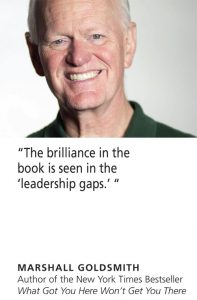

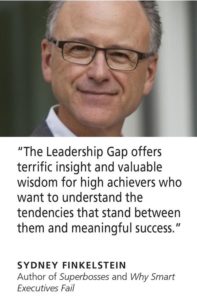

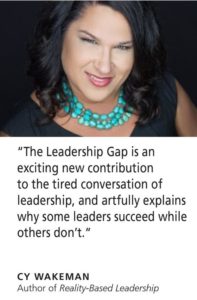

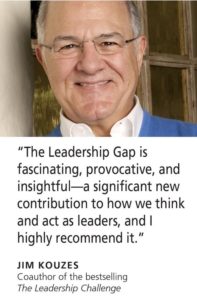
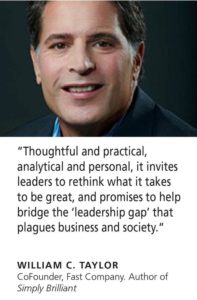

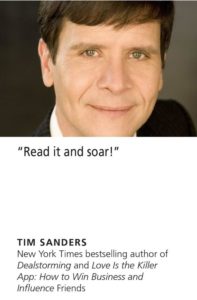
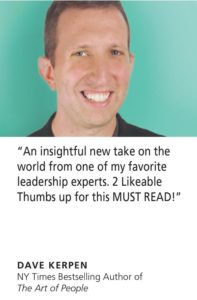
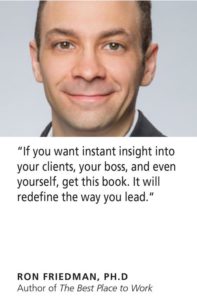


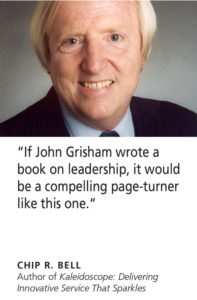
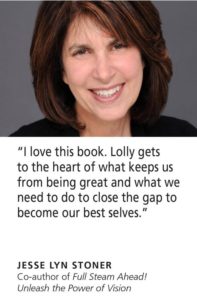
ABOUT THE AUTHOR
LOLLY DASKAL
Greatness is not a destiny granted to a few but a choice
offered to those who leverage their gaps.
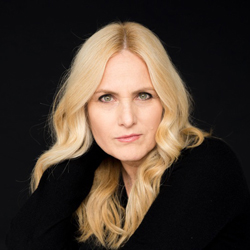
With over three decades of experience, Lolly Daskal is one of the most sought after executive leadership coaches and business consultants worldwide. Her extensive cross-cultural expertise spans several continents. Lolly works with a blue-chip roster of clients, from c-suite executives in Fortune 500 companies to government leaders, to entrepreneurs, to nonprofits. She serves organizations of all sizes in a wide-range of industries including energy, pharmaceutical, technology, and finance. She brings her expertise to her work that is grounded in behavioral and psychological principles. Lolly has received many honors and accolades including being named one of the Top 50 Leadership and Management Experts on Inc. Magazine. American Management Association called her the Leader to Watch and the Huffington Post named Lolly the most inspiring woman in the world.
MORE ABOUT LOLLY DASKAL
L E A D E R S H I P C O A C H I N G
B U S I N E S S C O N S U L T I N G
A W A R D -W I N N I N G L E A D E R S H I P B L O G
T O P C O L U M N I S T @I N C
H A R V A R D B U S I N E S S R E V I E W
P R E – O R D E R G E T B O N U S E S

